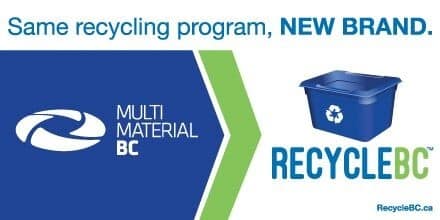Did you know that Multi-Material BC (MMBC) is responsible for more than 80% of the residential packaging and printed paper (PPP) recycling in the province of British Columbia, yet we do not own a single collection truck, and not even one material recovery facility?
As a non-profit society, MMBC represents member businesses. These businesses and organizations pay a fee to have MMBC manage their PPP Extended Producer Responsibility obligations under the BC Recycling Regulation (2011). MMBC’s members are retailers, restaurants, importers, manufacturers, distributors or wholesalers that supply packaging, and organizations such as insurance companies and banks that supply printed paper in the form of statements or other marketing material, to BC residents.
In turn, MMBC oversees the collection and processing of PPP, and ensures it meets the 75% recovery rate mandated by BC law. (In 2014, MMBC and our collection partners exceeded this target, achieving an 80% recovery rate).
How does the model work? On behalf of member businesses, MMBC provides oversight of their recycling obligations in one of three ways:
Local Government
In most areas of the province, local governments (municipalities and regional districts) continue to provide collection service to residents. MMBC provides a financial incentive for providing this service, which reduces property taxes for homeowners.
First Nations
Like the model above, 11 First Nations communities operate their own collection service, with financial incentive from MMBC. In the coming weeks we will feature one such First Nations community here on MMBC’s blog.
Private Collectors
MMBC contracts directly with 86 private collectors, which provide service for multi-family, depots, and areas where MMBC is directly responsible for curbside service. These collectors include companies such as Smithrite Disposal, Alpine Disposal, Emterra Environmental and other known service-providers that residents are likely familiar with and will see come by to pick up their recycling.
After material is collected, using one of the three methods described above, it is sent to a Material Recovery Facility (MRF) for sorting, processing and selling to recycling commodity end markets.
Whether your collector is your local government, your First Nations Band, or a private collector, all communities that are part of the MMBC program are able to recycle an expanded list of materials compared to before the program launched in 2014, and the cost of recycling is now financed by the companies and organizations that are bringing products into the BC marketplace, which means reduced taxes for property owners. Now that is something to celebrate.


